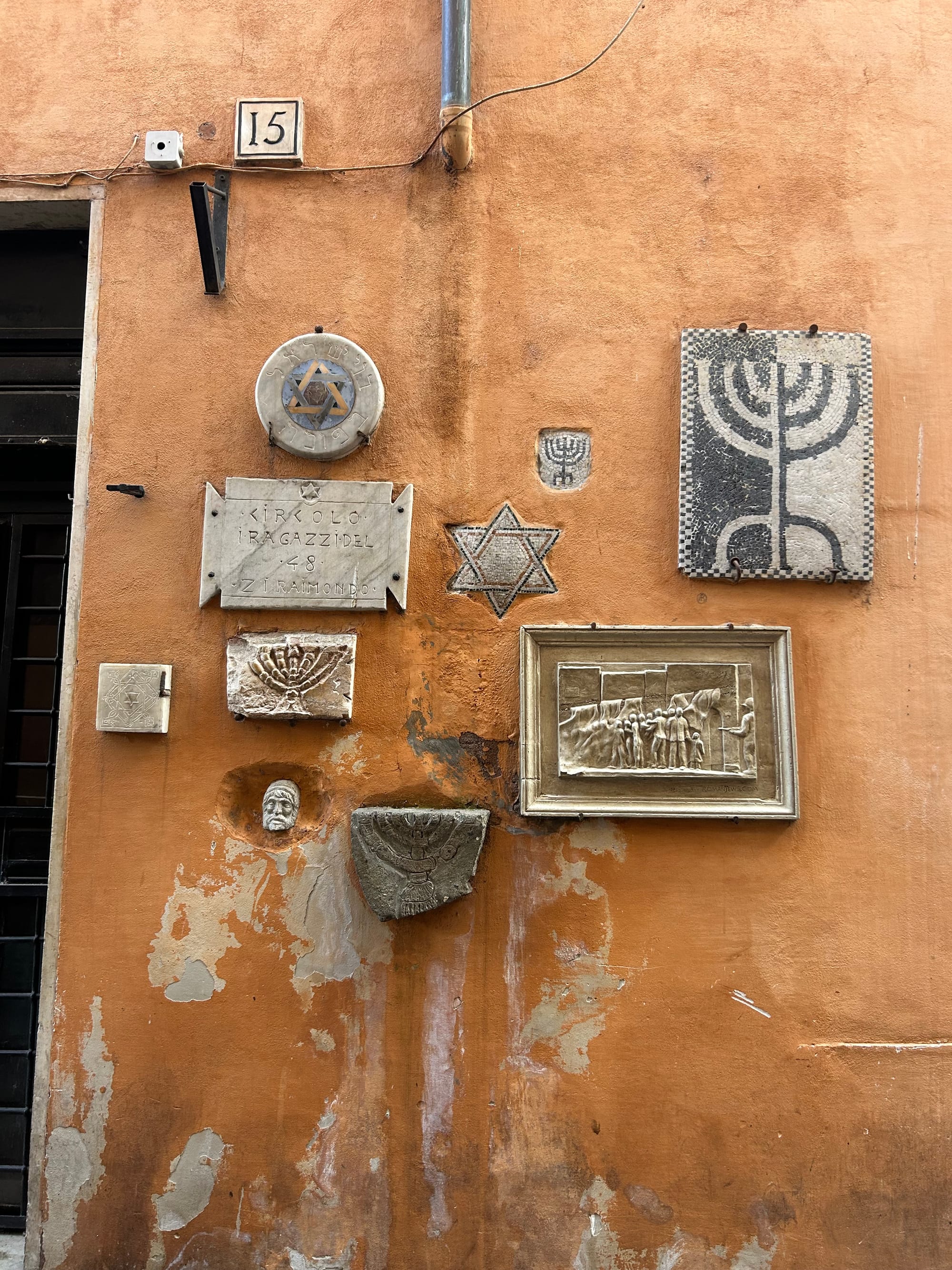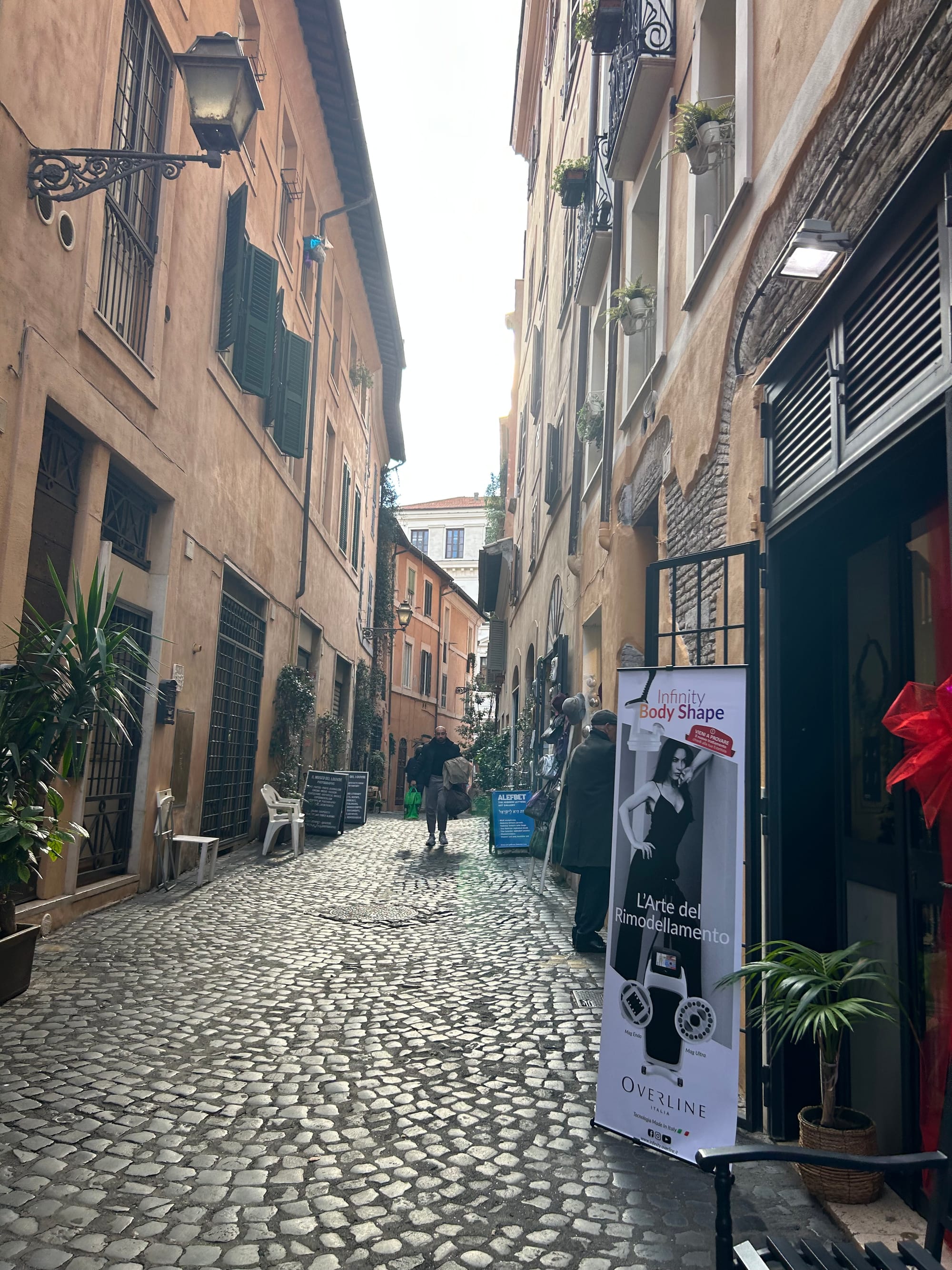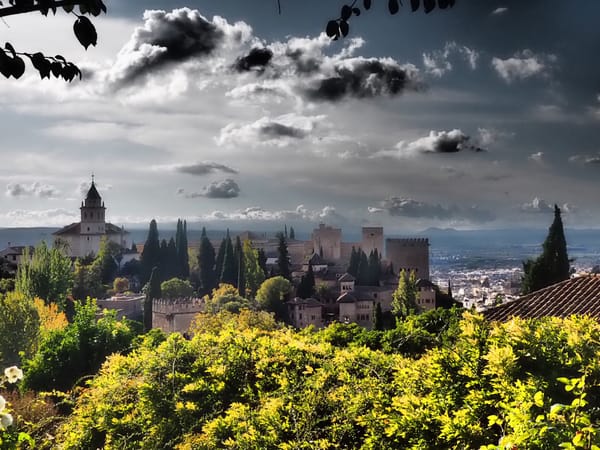People of the Artichoke: How a Scrubland Thistle Became a Culinary Icon By Claudette Sutton

The Jews of Rome perceive themselves as “the people of the artichoke, not just of the Shoah,” according to their Chief Rabbi, Riccardo Di Segni.
I came upon this quote shortly after my husband and I returned from a two-week trip to Italy in December, when we indulged in fried artichokes at least four times, more than any food other than pasta or gelato.
Each was a feast for the eyes and the palate: fried to golden brown, fanned out on the plate like a bronzed sunflower, crispy as a potato chip but not salty or greasy, savored in glorious entirety from leaf to stem.
Carciofo alla guidia, or Jewish-style artichoke, is now found throughout Italy, not just in Rome, and not just in Jewish neighborhoods or kosher restaurants, yet it has become an emblem of Rome’s Jewish community, adorning cookbook covers, restaurant marquees, even postcards in the city’s Jewish museum.
The story of how this food has become so iconic of this community is worth peeling back, one delicious leaf at a time, revealing a history stretching back millenni
We can only speculate on the first ingenious, or perhaps desperate, person to look at this thorny, leather-leafed variety of thistle growing wild throughout the Mediterranean and say, “Let’s eat that!”
We know more about the Jews who would come to embrace this food. In 161 BCE, Judah Maccabee sent two representatives from Jerusalem to enlist help from the Romans against King Antiochus, leader of the Seleucid Greek Empire, who attempted to conquer Judea and force Jews to worship Greek gods. The two Jewish emissaries were met in Rome by a small group of Jewish merchants and former slaves, forming the nucleus of a community. Antiochus was defeated by the rebel army known as the Maccabees, and Roman leaders permitted Jews to live independently in Rome and worship as they pleased.
In 70 CE, a far less sympathetic Roman general, the Emperor Titus, conquered Jerusalem and destroyed the Second Temple, the epicenter of Jewish life. His armies returned to Rome with plunder from the Temple, and thousands of Jewish slaves. The brutal suppression of Jerusalem launched the diaspora of Jews around the world, leading to the divergence of Ashkenazi and Sephardi branches of Judaism. The Roman-Jewish community, with roots in pre-diaspora Rome, became a distinct (and far smaller) branch of Judaism known as Italki. Over the centuries, it incorporated unique Roman influences with Jewish rituals that trace back to Judea prior to the destruction of the Second Temple.
Another leap in Rome’s Jewish population came in 1492, with the arrival of Jews expelled from the Spanish Empire (which at the time included portions of southern Italy). They found temporary respite in Rome until 1555, when Pope Paul IV issued a papal bull revoking the rights of the city’s Jews and confining them to a tiny, flood-prone parcel of land on the banks of the Tiber River.
By night, the walls surrounding this parcel were locked, effectively rendering it a ghetto. By day, Jews who left its gates were required to wear identifying clothing, subjecting them to ridicule and abuse. On Saturdays, they were forced to attend mass at one of the churches just outside the gates. Banned from owning property, excluded from all but the most menial jobs, they eked out a living as rag sellers, fish peddlers, and money lenders. Prohibited from expanding the footprint of the ghetto as their population grew, they erected piecemeal, ramshackle structures that choked out natural sunlight and fresh air.


Plaques, etchings and artifacts preserve a feel of the former Jewish ghetto. Rome's former Jewish ghetto is now a high-end, fashionable neighborhood. photos © Claudette Sutton/NMJewishJournal.com
Successive popes used deprivation and humiliation for three centuries to force these Jews to convert. The ghetto was not opened until 1870, following Italy’s unification into one country from multiple independent papal states.
Yet despite the harsh conditions, their shared isolation and adversity strengthened the Roman-Jewish identity. They developed their own dialect, Giudaico Romanesco, weaving Hebrew and Aramaic into the traditional dialect of Rome. Though now considered an endangered language, traces of Giudaico Romanesco are still sprinkled through conversations of community elders.
They created new musical styles, blending traditional Jewish liturgy with Roman melodies.
And of course, they forged a unique cuisine, la cocina ebraica-romanesca, distinct even from other Italian-Jewish foods.
Jewish-Roman cuisine arose through hardship and ingenuity. Prohibited from buying fish larger than a very limited size, Jews developed flavorful and nutritious dishes with smaller species, including anchovies, sardines and mackerel, which they also incorporated into aromatic sauces and soups.
Too poor to purchase anything but “throwaway” parts of cow and lamb, they created dishes with sweetbreads, tripe, brains, oxtail, even vegetable discards such as squash blossoms – foods of humble origins that have become sought-after delicacies.
Access to inexpensive or wild-foraged vegetables, along with locally produced olive oil, led to a plethora of deep-fried foods, adding valuable nutrients, calories, and flavor to their limited culinary repertoire.


The Great Synagogue of Rome, and its extraordinary onsite museum, are must-see places on a visit to Jewish Rome. The synagogue's unique square, aluminum dome is visible all over the city. photos © Claudette Sutton/NMJewishJournal.com
Over its 2200-year history, the Roman-Jewish community has preserved its own rituals, prayer melodies, cantillation styles, even a distinct way of blowing the shofar. Along the way, these resilient, indomitable people embraced a prickly, tenacious, scrubland plant as their delectable mascot.
Back home, I visited my local library for Italian-Jewish cookbooks, then purchased my favorite: Portico: Cooking and Feasting in Rome’s Jewish Kitchen, by Leah Koenig.
Koenig of course includes a recipe for Jewish-Style Fried Artichokes, but notes, “they are a project.” The artichokes available in our supermarkets require careful trimming, and the dish calls for two separate rounds of deep frying: first at a low temperature to tenderize them, then at a higher temperature with the leaves spread out to make them crispy.
This was more complicated than I wanted to attempt in my kitchen, especially without an Italian nonna on hand for guidance. And let’s face it: Some foods are best experienced in situ.
Instead, I made Koenig’s simpler version, which uses canned artichokes, to great household delight. The only adjustment I made for Santa Fe’s 7,000-foot elevation was heating the oil to a slightly lower temperature and cooking the artichokes a little longer. To quote an old long-distance phone service commercial: It’s the next best thing to being there.
Simpler Fried Artichokes with Herbed Salt
Serves 4 to 6
For the Herbed Salt:
½ teaspoon dried rosemary, crumbled
½ teaspoon dried oregano
½ teaspoon grated lemon zest
1 teaspoon kosher salt.
Combine in a small bowl and rub together with your fingertips. Set aside.
For the Artichokes:
Two 14-ounce (400 g) cans or jars of artichoke hearts, drained and halved lengthwise.
Light olive oil or vegetable oil (such as sunflower or grapeseed) for deep frying.
Line a large baking sheet with paper towels or a clean dish towel and lay the halved artichoke hearts in a single layer on it. Cover with a second layer of paper towels or another dish towel and gently pat the artichokes dry. Allow them to dry like this for at least 30 minutes, and up to 2 hours.
Heat 1 inch (2.5 cm) of oil in a medium pot over medium heat until it reaches 350 degrees F (180 degrees C) on a deep-fry thermometer. Line a large baking sheet with paper towels and set nearby.
Working in batches of 4 or 5, gently slip the artichoke hearts into the oil and fry, turning once, until deeply golden brown and crisp, 2 to 4 minutes. Transfer the fried artichokes to the paper towel-lined plate to drain briefly, then transfer to a serving platter and sprinkle with some of the herbed salt. Serve hot.
From Portico: Cooking and Feasting in Rome’s Jewish Kitchen, by Leah Koenig; W.W. Norton & Company, 2023; used by permission.
Claudette Sutton is the author of Farewell, Aleppo: My Father, My People, and their Long Journey Home and a regular contributor to the New Mexico Jewish Journal. She loves helping family stories come into the world and is available as a freelance editor or coach for your writing project. Visit her at https://www.claudettesutton.com/
Claudette Sutton swept all the possible awards in this year's New Mexico Press Women Contest available in Food: 1st, 2nd, and 3rd, for her Syrian family’s stories and recipes: Seeds of a Good Year: Black-Eyed Peas for Rosh Hashanah, Culinary Time Travel: Easy, Cheesy Sambusak and Heritage in a Bowl: My Heirloom Haroset, along with the review, Make Room for This One: The Eucalyptus Cookbook, evoking this pithy comment, “It prompts this goy girl to buy it.”
Return to HOME
Community Supporters of the NM Jewish Journal include:
Jewish Community Foundation of New Mexico
Congregation Albert
Jewish Community Center of Greater Albuquerque
The Institute for Tolerance Studies
Jewish Federation of El Paso and Las Cruces
Temple Beth Shalom
Congregation B'nai Israel
Shabbat with Friends: Recapturing Together the Joy of Shabbat
New Mexico Jewish Historical Society
Single Event Announcement:
Save our Jewish Cemetery
Camp Daisy & Harry Stein Overnight Camp
Policy Statement Acceptance of advertisements does not constitute an endorsement of the advertisers’ products, services or opinions. Likewise, while an advertiser or community supporter's ad may indicate their support for the publication's mission, that does not constitute their endorsement of the publication's content.
Copyright © 2025 New Mexico Jewish Journal LLC. All rights reserved.



